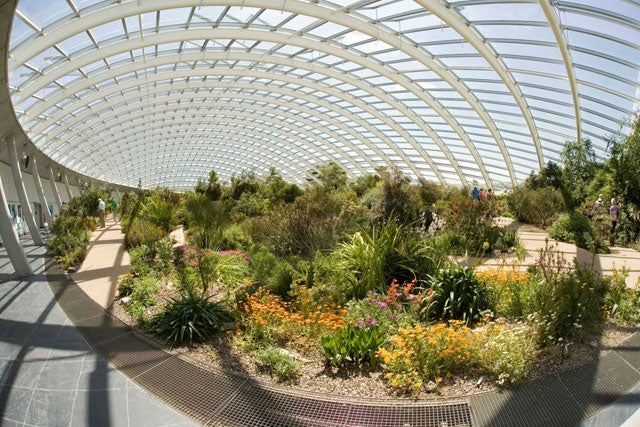Urban Gardener: The glasshouse effect

Another busman's jolly, this time to the National Botanic Garden of Wales (NBGW) near Camarthen. It's a garden I've been meaning to visit ever since it opened eight years ago to a rousing ovation. A large slice of that applause was for the Great Glasshouse and the inspired collaboration between the architect Norman Foster and Kathryn Gustafson, who landscaped its interior.
After the initial buzz when the forecasted visitor numbers proved a touch optimistic, a period of financial instability had the garden teetering on bankruptcy until recently, when the Welsh Assembly agreed to clear their debts. Now, with a clean balance sheet, plants maturing and visitor numbers up, the garden is set to steer a more comfortable course and is already establishing itself as an important cultural and scientific asset.
The setting is sublime. The garden, just 10 minutes from where the M4 peters out, occupies one fifth of the 500-acre Middleton Estate and, surrounded by restored lakes and stunning countryside, has a unique advantage over most botanic gardens, which are usually located in or very near cities. The rural setting provides a pollution-free variety of habitats and microclimates for plant and animal life to thrive. And like any self-respecting botanical garden whose mission is to promote a better understanding of the world's plants and their conservation, work starts in its own backyard – one in five Welsh plant species (Wales is home to two thirds of Britain's native plants) is under threat of extinction. The NGBW is therefore home to critically endangered species such as Ley's Whitebeam (Sorbus leyana) of which there are only 16 wild specimens left. It also conserves rare plants like the Whorled Caraway (Carum verticillatum), Greater Butterfly Orchid (Platanthera chlorantha), waxcap fungi and various lichens. There is also a working organic farm to show how responsible stewardship and farming techniques can benefit the surrounding landscape.
The Great Glasshouse, the largest single-span dome in the world, is simply beautiful. So sensitively and elegantly has it been moulded to the land around it that it modestly allows visitors time to explore other parts of the garden first. You can see it from The Broadwalk, with its winding rill, inspired by the nearby river Tywi, and small paths that peel off to take you among a herbaceous display that takes full advantage of the fertile soil, clean Atlantic air and copious amounts of annual rainfall. You're still aware of it from the old kitchen garden that has been designed to show 140 million years of botanic history and the evolution of flowering plants based on the latest DNA research. You might lose sight of it briefly in the tropical glasshouse, or as you explore the buildings and remnants of the estate, but outside you can feel its presence. It's not until you walk through swathes of wild-meadow planting that slope up to the Great Glasshouse that it whispers seductively like some Cambrian siren. It knows that it's well worth the entrance fee on its own.
Gustafson's masterful treatment of the landscape within takes you on a journey through six Mediterranean-type climates of the world where more than 20 per cent of the world's plants have adapted to rocky landscapes with hot, dry summers and cool, moist winters. A sandstone ravine, dramatic and unashamedly contemporary, is six metres at its deepest, yet the journey is effortless thanks to a clever path system that also makes the interior feel twice as big. Each region is in perfect harmony with its neighbour, despite the thousands of miles that separate them in real life.
Like any botanic garden worth its salt, it's impossible to see everything at the NBGW in one go, so I've already planned another trip later this summer. Economics will dictate its development and this is no bad thing. Gardens of this importance should be allowed to evolve at their own pace. Pearls don't grow overnight.
The National Botanic Garden of Wales, Carmarthenshire; www.gardenofwales.org.uk
Join our commenting forum
Join thought-provoking conversations, follow other Independent readers and see their replies
Comments